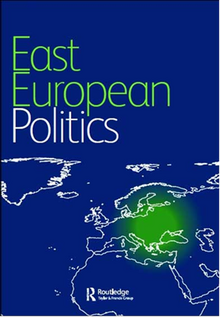SYNOPSIS : This paper takes a bottom-up perspective on the “boundary issues” that emerged between the EU and Russia with and since the end of the Cold War: the mobility of people and goods, energy and natural resources, security, and protection of minorities. This paper compares three zones of contact: Estonia, Moldova and Kaliningrad. Our starting point is that there is not a European-Russian relationship, but Russian European relations that vary according to interests and representations on the ground. We argue that cooperation and conflict are not tightly coupled with the geopolitical level but also shaped by the local dynamics of symbolic boundary making.
Dembińska, Magdalena, Frédéric Mérand et Anastasiya Shtaltovna (2020), “Conflict and Cooperation between Europe and Russia: The Autonomy of Local Actors”, East European Politics, DOI: 10.1080/21599165.2020.1784145.
